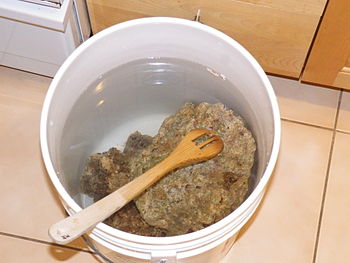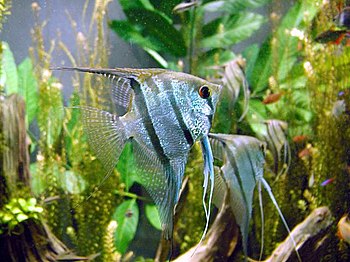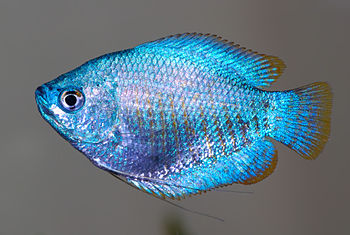Description:
Ball pythons grow to about 4 feet in length and some may grow to about 5 feet in length. They become nicely rounded if properly fed. They have anal spurs. These are single claws that appear on either side of the vent. Males have longer spurs than females and males also have smaller heads than females. They have blotches on a brown or bluish-brown background color. Colors may vary but there will be shades of yellow found in all ball pythons.
 |
| Female ball python (Python regius) brooding a clutch of eggs. (Photo credit: Wikipedia) |
Basic Care:
Glass tanks can be used for housing with a fixed glass top. Ball pythons are more cunning than other snakes when it comes to escaping from the cage. A ten gallon tank can be used for a hatchling. A young adult will need a 20 gallon tank, and a full grown adult will need a 30 gallon tank.
These snakes will adjust to the environment it is housed in, but will normally require a more humid area when it is shedding. If one notices that the snake has not eaten for a very long time though it is necessary, and it begins to lose weight, it must be shown to a vetenary.
Diet:
In the wild ball pythons eat amphibians, other snakes, small mammals and birds. They do not eat mice in the wild. In captivity one has to let them grow into the activity of being fed with mice. These snakes do not need to eat regularly and some may even live for up to a year without any food.
Baby ball pythons can be fed with mice that have already been killed. If the hatchling is smaller than usual, a smaller mouse can be used as the feed. Adults may be fed with larger mice. These snakes do not need a regular feeding time table. Fresh water must be provided daily, as the ball python like others drinks and also soaks itself in the water.
Heat and light:
For the snake to be healthy proper temperature range must be maintained. A temperature of 80 to 85 ºF with a 90 degree spot for basking must be maintained in the day time. The temperature may be around 70 to 75 ºF in the cooler area. Heating pads may be used under the glass enclosure.
Hot rocks will not be suitable because ball pythons are susceptible to thermal burns. Special lights are not needed, and a low wattage bulb can be used to view the snake in the day time. Ball pythons are especially prone to getting burned and so the light must not be kept directly above them.
Environment:
Ball pythons in the wild are found in generally temperate to arid areas. Initially paper towels can be used as substrate in the housing. This will also help determine if there are any mites present and also the feces can be monitored. Shredded cypress or fur bark can be used after the ball python is used to living in the enclosure. Pine and aspen shavings are not recommended, as they may get lodged in the mouth causing respiratory problems. Soiled shavings must be removed to prevent the growth of bacteria and fungus.
An empty cardboard box or a log must be placed inside the cage for the ball python to use it as a hiding place. One must make sure the box is large enough for the entire snake to fit inside. The hiding place should not be too big as the snake likes to have a small place to hide. Fake branches and greenery may be placed inside the cage for the snake to climb and hang on.
Behavior:
They are active around dawn and dusk. They are comfortable on the ground and in the trees. They curl up tightly and put their heads in the centre when they become nervous. They are curious and gentle. Some ball pythons will not shed for a few months when they are initially in captivity. This means they are highly stressed with the surroundings.








